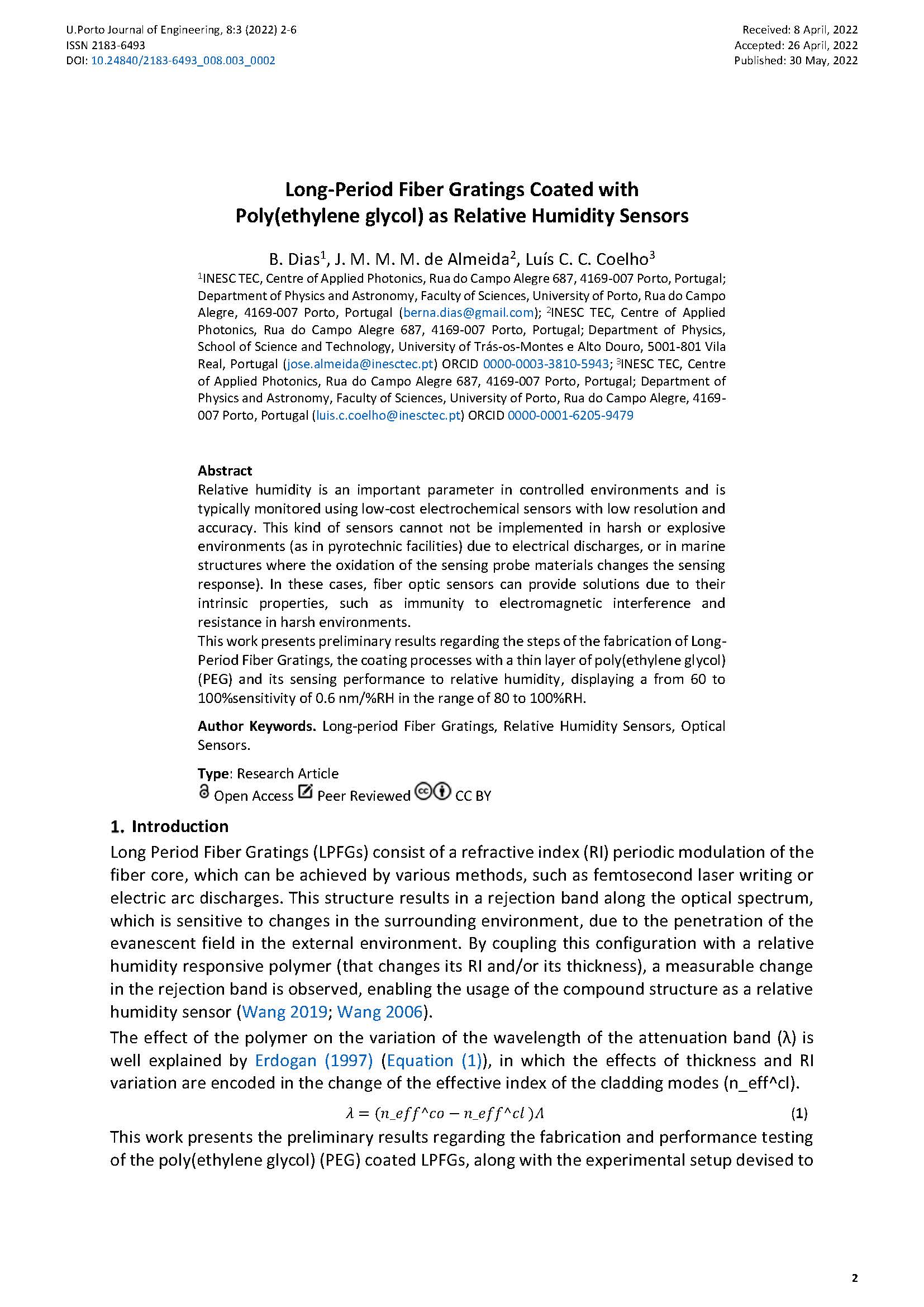Long-Period Fiber Gratings Coated with Poly(ethylene glycol) as Relative Humidity Sensors
Main Article Content
Abstract
Relative humidity is an important parameter in controlled environments and is typically monitored using low-cost electrochemical sensors with low resolution and accuracy. This kind of sensors cannot not be implemented in harsh or explosive environments (as in pyrotechnic facilities) due to electrical discharges, or in marine structures where the oxidation of the sensing probe materials changes the sensing response). In these cases, fiber optic sensors can provide solutions due to their intrinsic properties, such as immunity to electromagnetic interference and resistance in harsh environments. This work presents preliminary results regarding the steps of the fabrication of Long-Period Fiber Gratings, the coating processes with a thin layer of poly(ethylene glycol) (PEG) and its sensing performance to relative humidity, displaying a from 60 to 100%sensitivity of 0.6 nm/%RH in the range of 80 to 100%RH.
Downloads
Article Details

This work is licensed under a Creative Commons Attribution 4.0 International License.
Authors who publish with this journal agree to the following terms:
- Authors retain copyright and grant the journal right of first publication with the work simultaneously licensed under a Creative Commons Attribution License that allows others to share the work with an acknowledgement of the work's authorship and initial publication in this journal.
- Authors grant the journal the rights to provide the article in all forms and media so the article can be used on the latest technology even after publication and ensure its long-term preservation.
- Authors are able to enter into separate, additional contractual arrangements for the non-exclusive distribution of the journal's published version of the work (e.g., post it to an institutional repository or publish it in a book), with an acknowledgement of its initial publication in this journal.
- Authors are permitted and encouraged to post their work online (e.g., in institutional repositories or on their website) prior to and during the submission process, as it can lead to productive exchanges, as well as earlier and greater citation of published work (See The Effect of Open Access).

